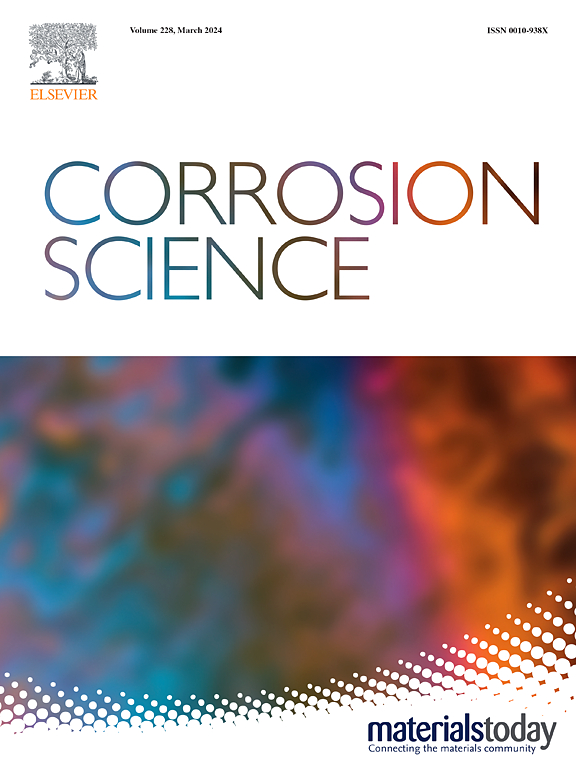Synergic effects of temperature and pressure on the hydrogen diffusion and dissolution behaviour of X80 pipeline steel
IF 7.4
1区 材料科学
Q1 MATERIALS SCIENCE, MULTIDISCIPLINARY
引用次数: 0
Abstract
Gas-phase hydrogen permeation experiments were conducted on X80 steel at temperatures from −15℃ to 60℃ and hydrogen pressures of 1, 4, 8 MPa. Hydrogen trap densities were determined, and a method for calculating nonlinear hydrogen concentration distribution was established and verified. Results reveal different temperature dependencies for hydrogen concentrations at varying pressures. At 4 and 8 MPa, the hydrogen concentration increases with temperature, whereas at 1 MPa, it initially decreases before increasing. Additionally, the influences of hydrogen pressure, hydrogen trap binding energy, and hydrogen trap density on this trend are discussed.
温度和压力对 X80 管线钢氢扩散和溶解行为的协同效应
在温度为 -15℃ 至 60℃、氢气压力为 1、4、8 兆帕的条件下,对 X80 钢进行了气相氢渗透实验。测定了氢阱密度,建立并验证了非线性氢浓度分布计算方法。结果表明,在不同压力下,氢浓度与温度的关系不同。在 4 和 8 兆帕压力下,氢浓度随温度升高而增加,而在 1 兆帕压力下,氢浓度最初先降低后升高。此外,还讨论了氢压、氢阱结合能和氢阱密度对这一趋势的影响。
本文章由计算机程序翻译,如有差异,请以英文原文为准。
求助全文
约1分钟内获得全文
求助全文
来源期刊

Corrosion Science
工程技术-材料科学:综合
CiteScore
13.60
自引率
18.10%
发文量
763
审稿时长
46 days
期刊介绍:
Corrosion occurrence and its practical control encompass a vast array of scientific knowledge. Corrosion Science endeavors to serve as the conduit for the exchange of ideas, developments, and research across all facets of this field, encompassing both metallic and non-metallic corrosion. The scope of this international journal is broad and inclusive. Published papers span from highly theoretical inquiries to essentially practical applications, covering diverse areas such as high-temperature oxidation, passivity, anodic oxidation, biochemical corrosion, stress corrosion cracking, and corrosion control mechanisms and methodologies.
This journal publishes original papers and critical reviews across the spectrum of pure and applied corrosion, material degradation, and surface science and engineering. It serves as a crucial link connecting metallurgists, materials scientists, and researchers investigating corrosion and degradation phenomena. Join us in advancing knowledge and understanding in the vital field of corrosion science.
 求助内容:
求助内容: 应助结果提醒方式:
应助结果提醒方式:


